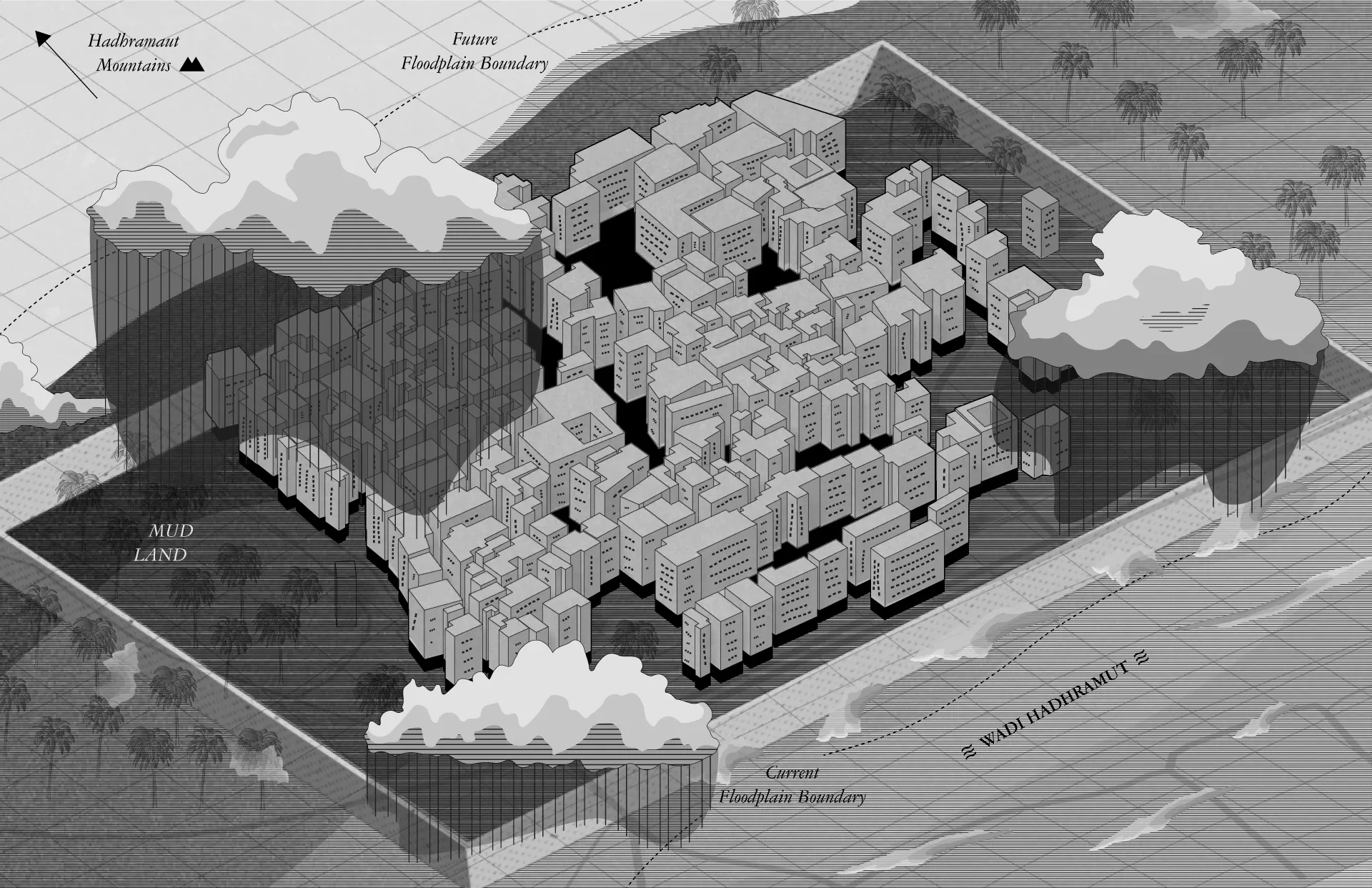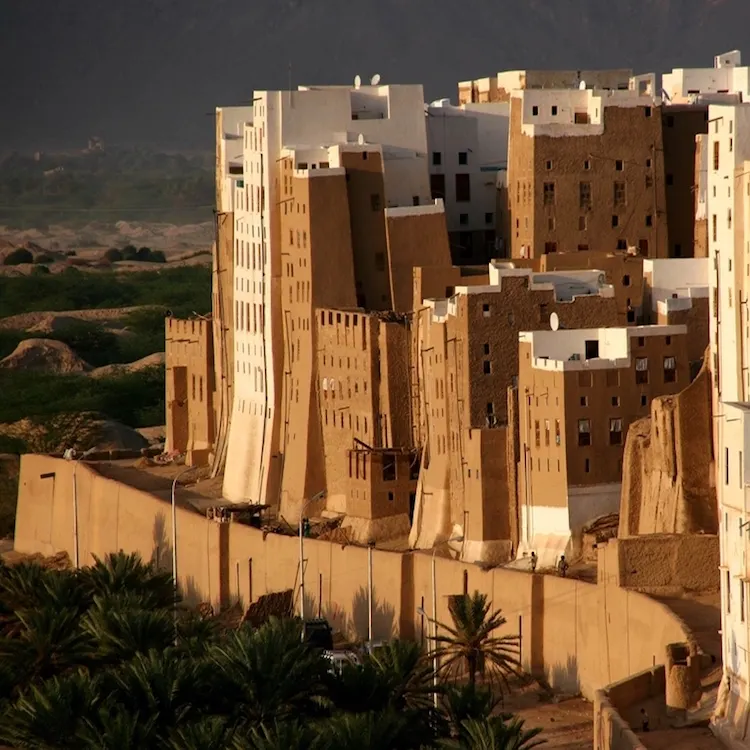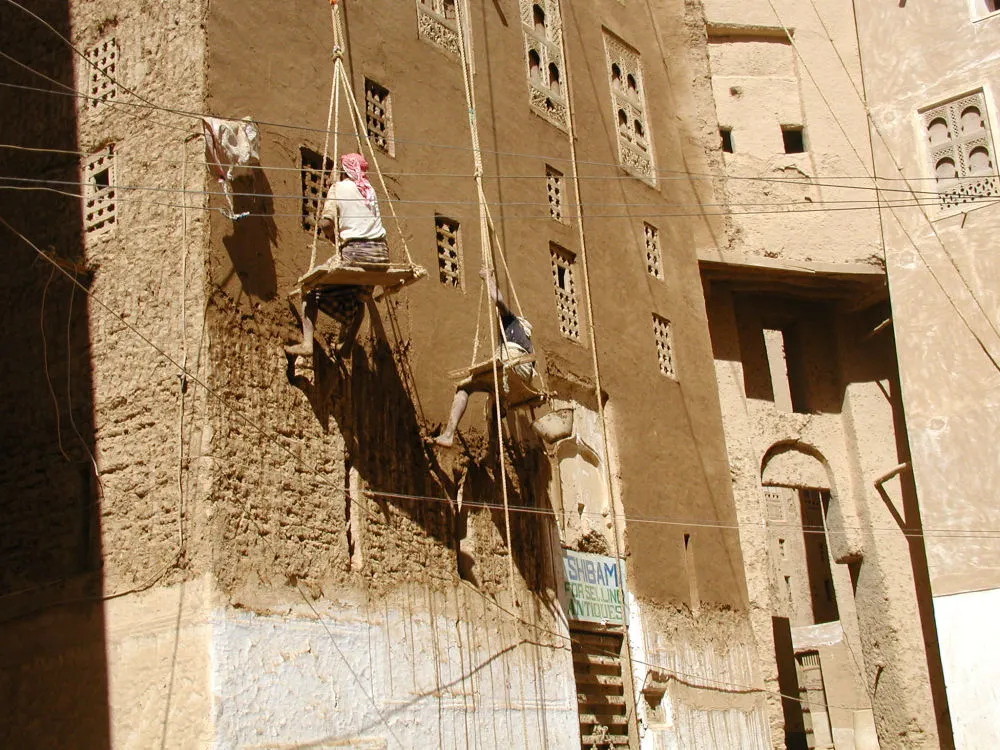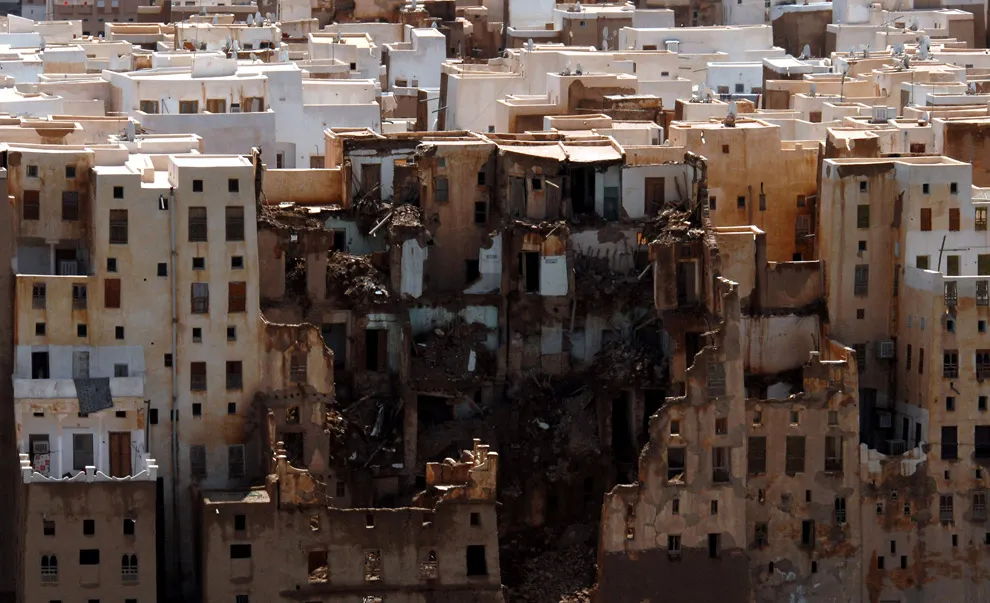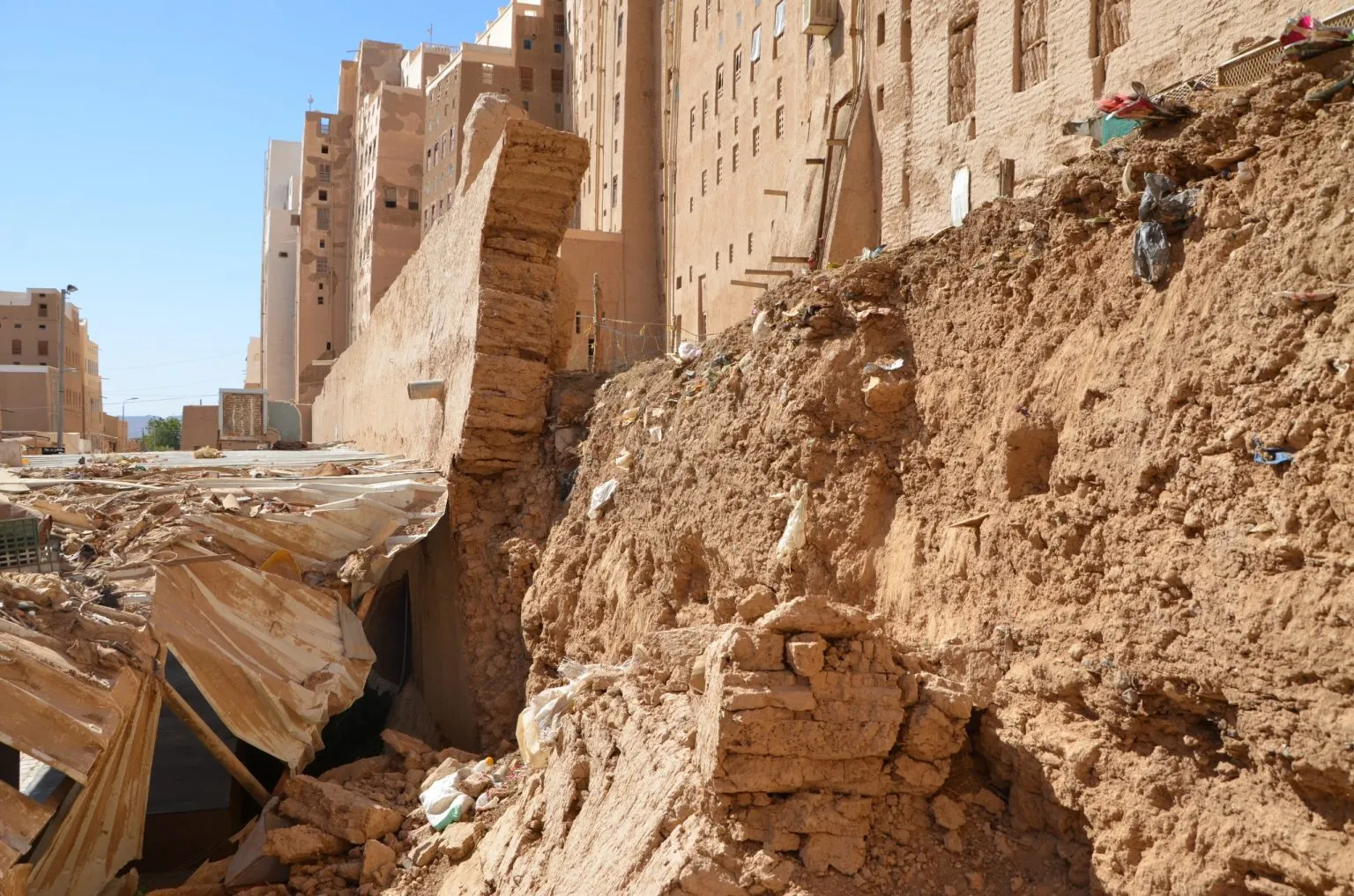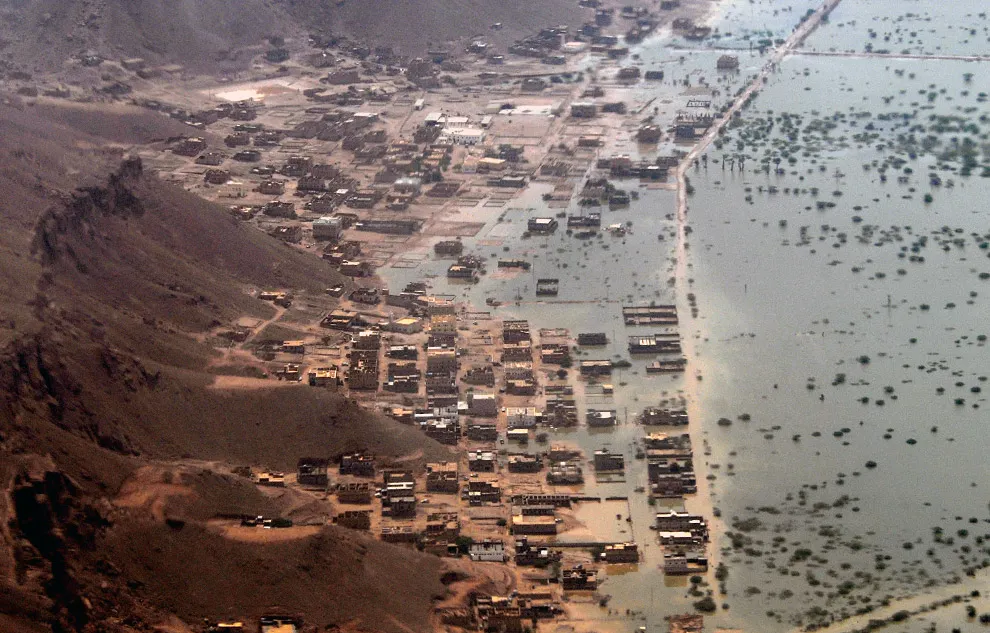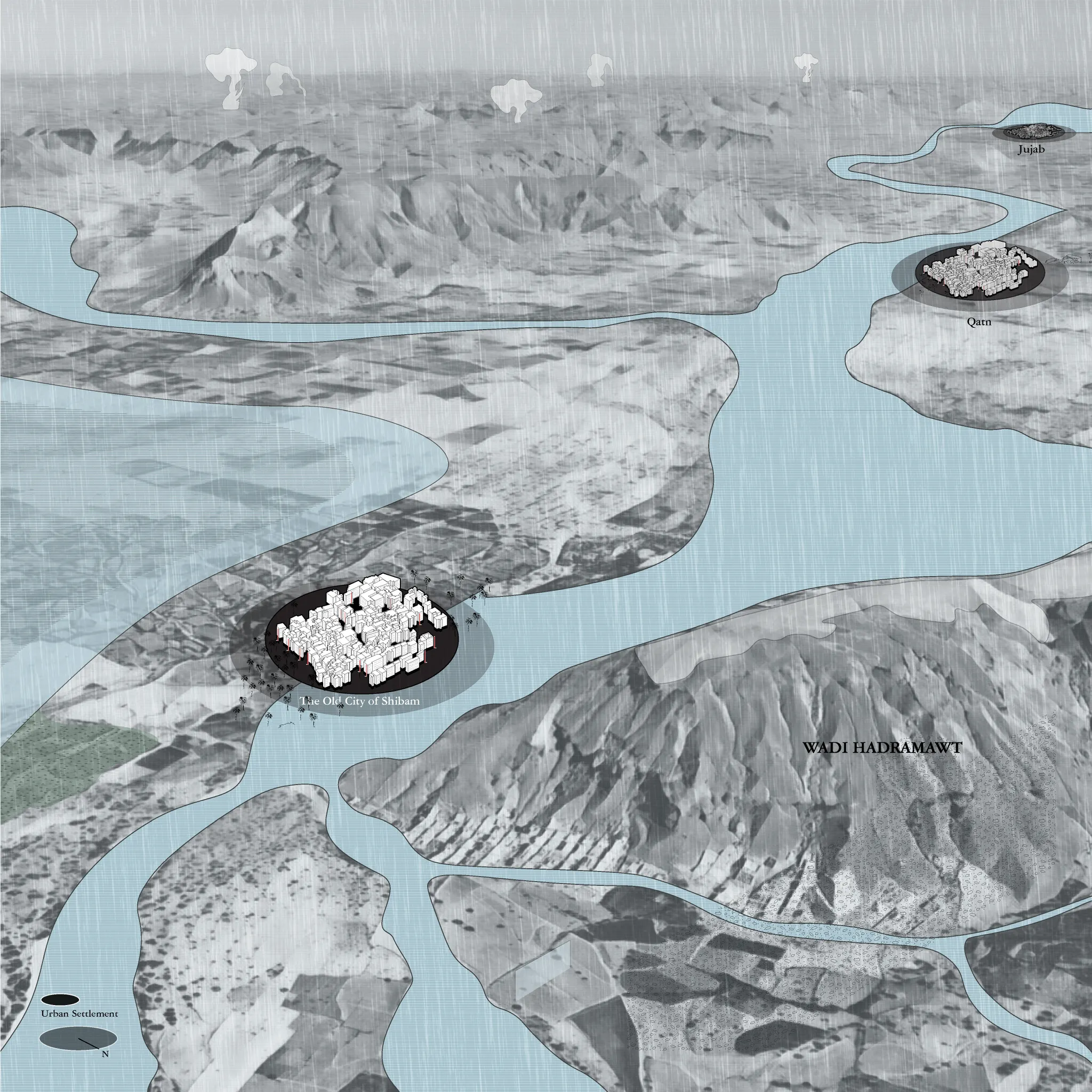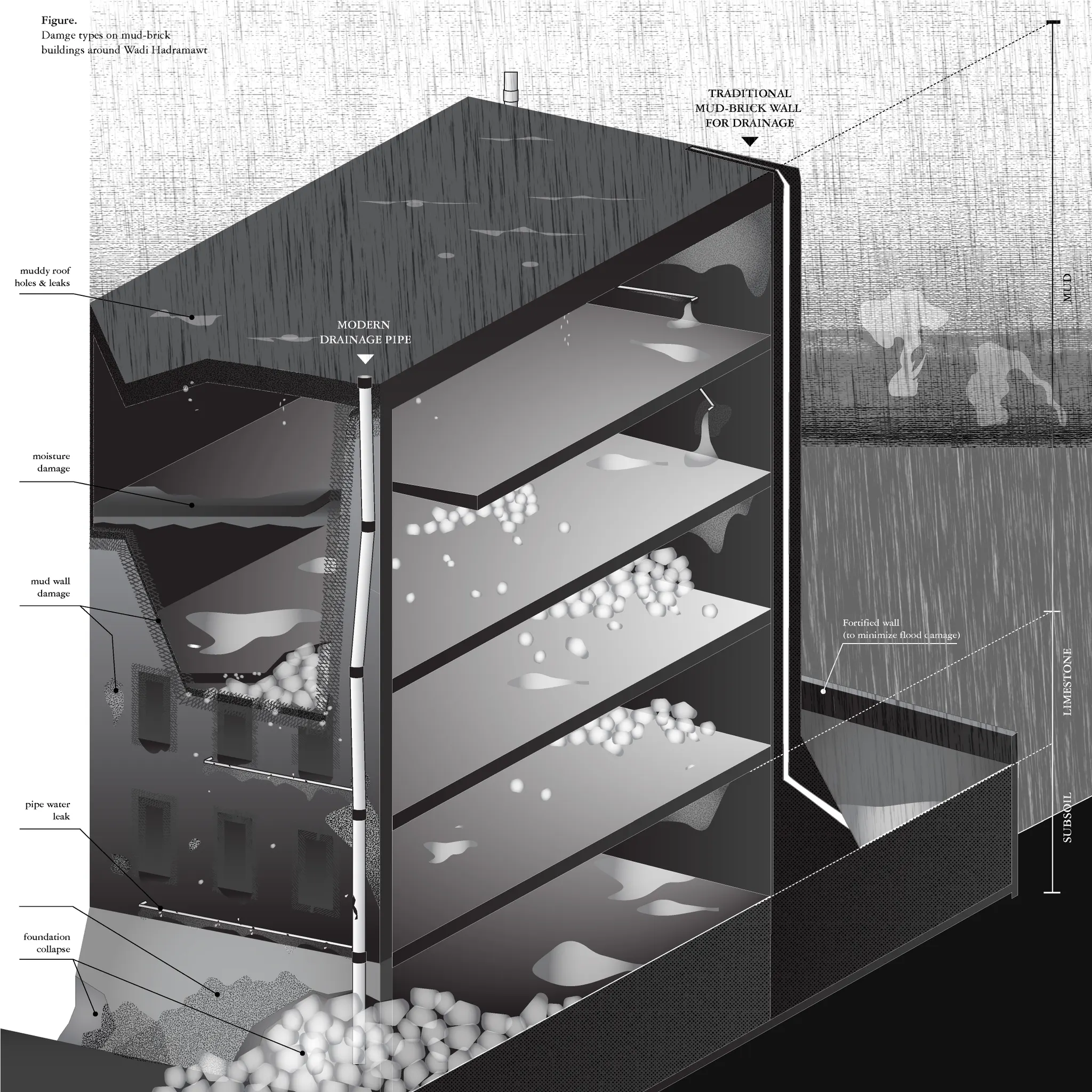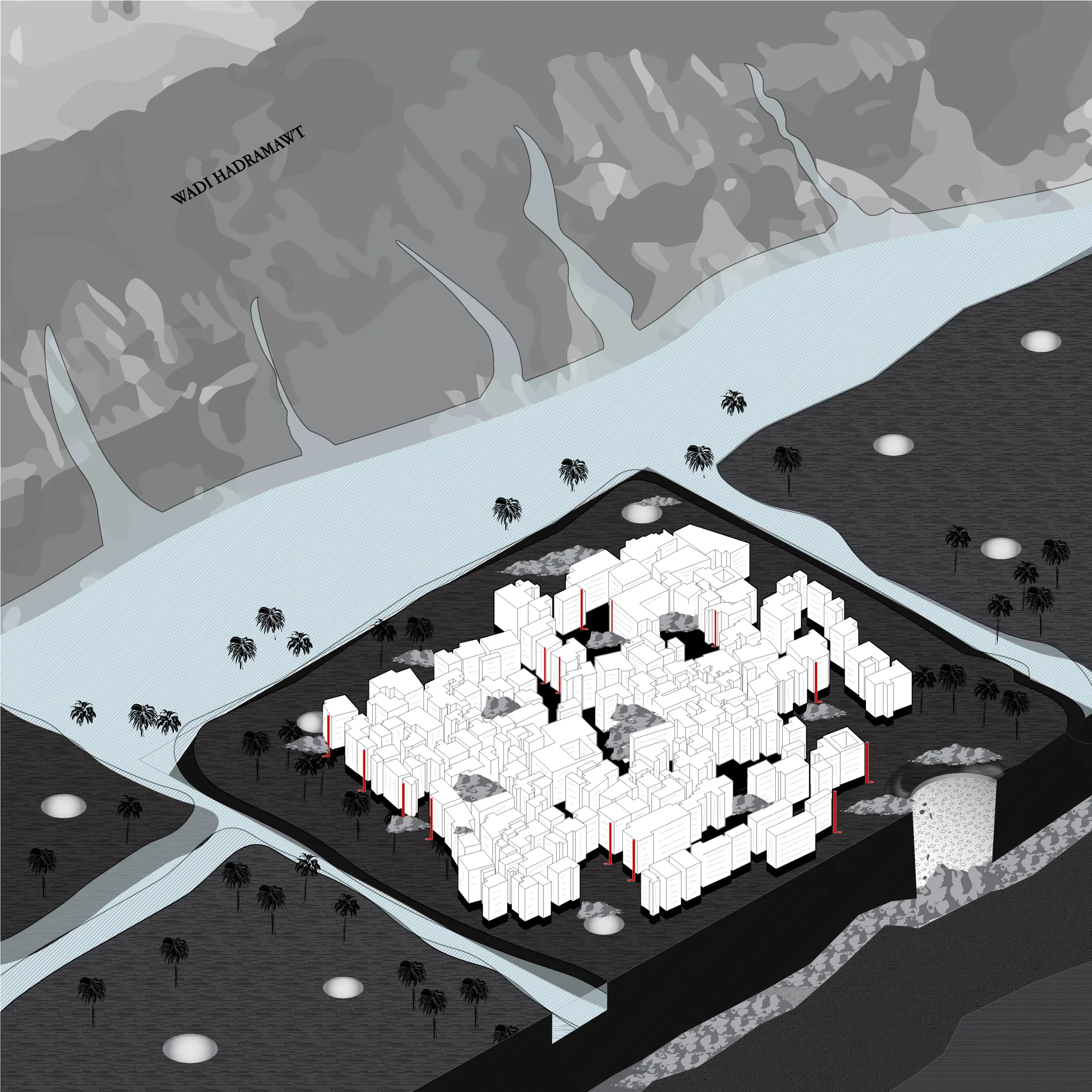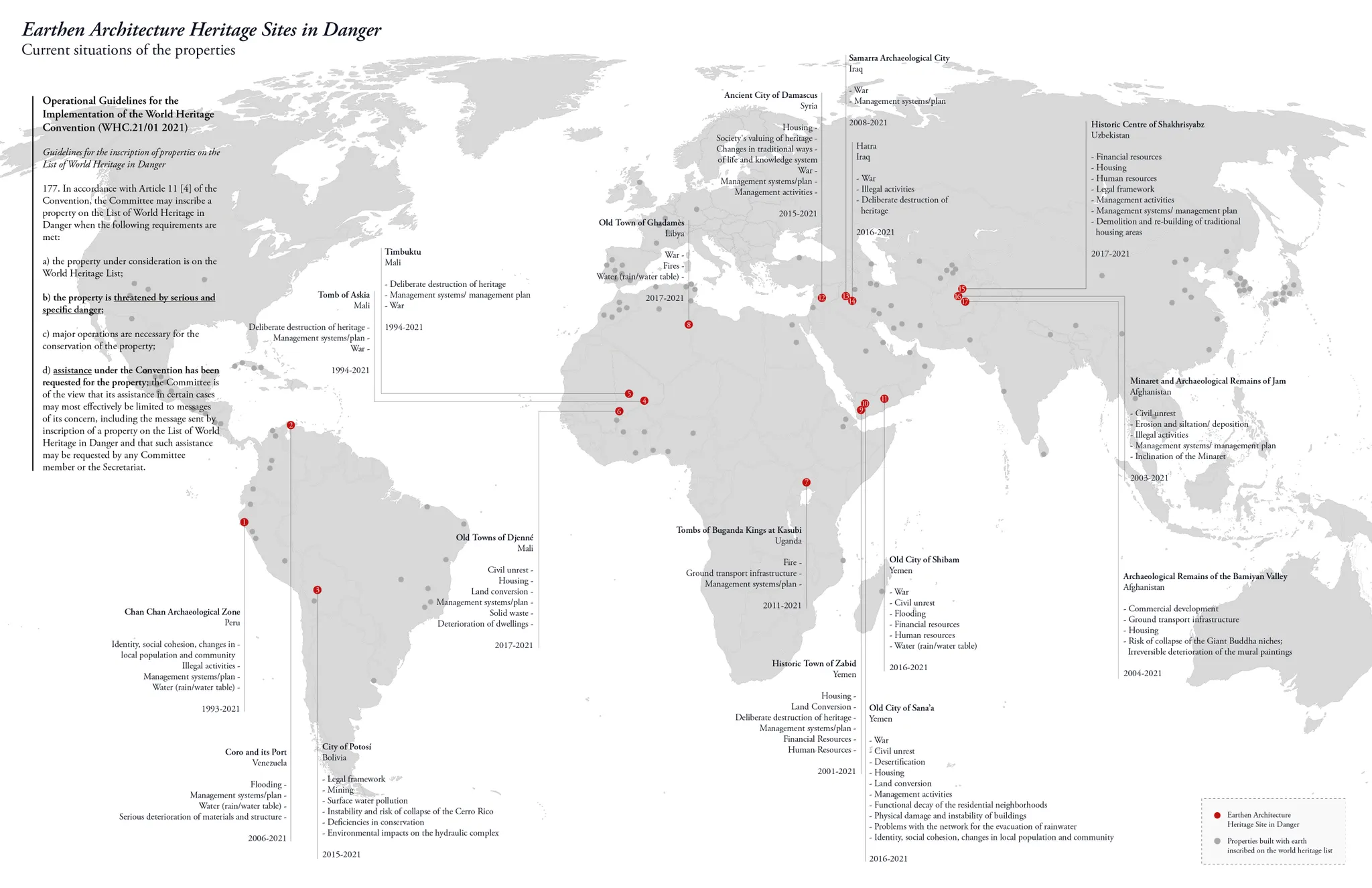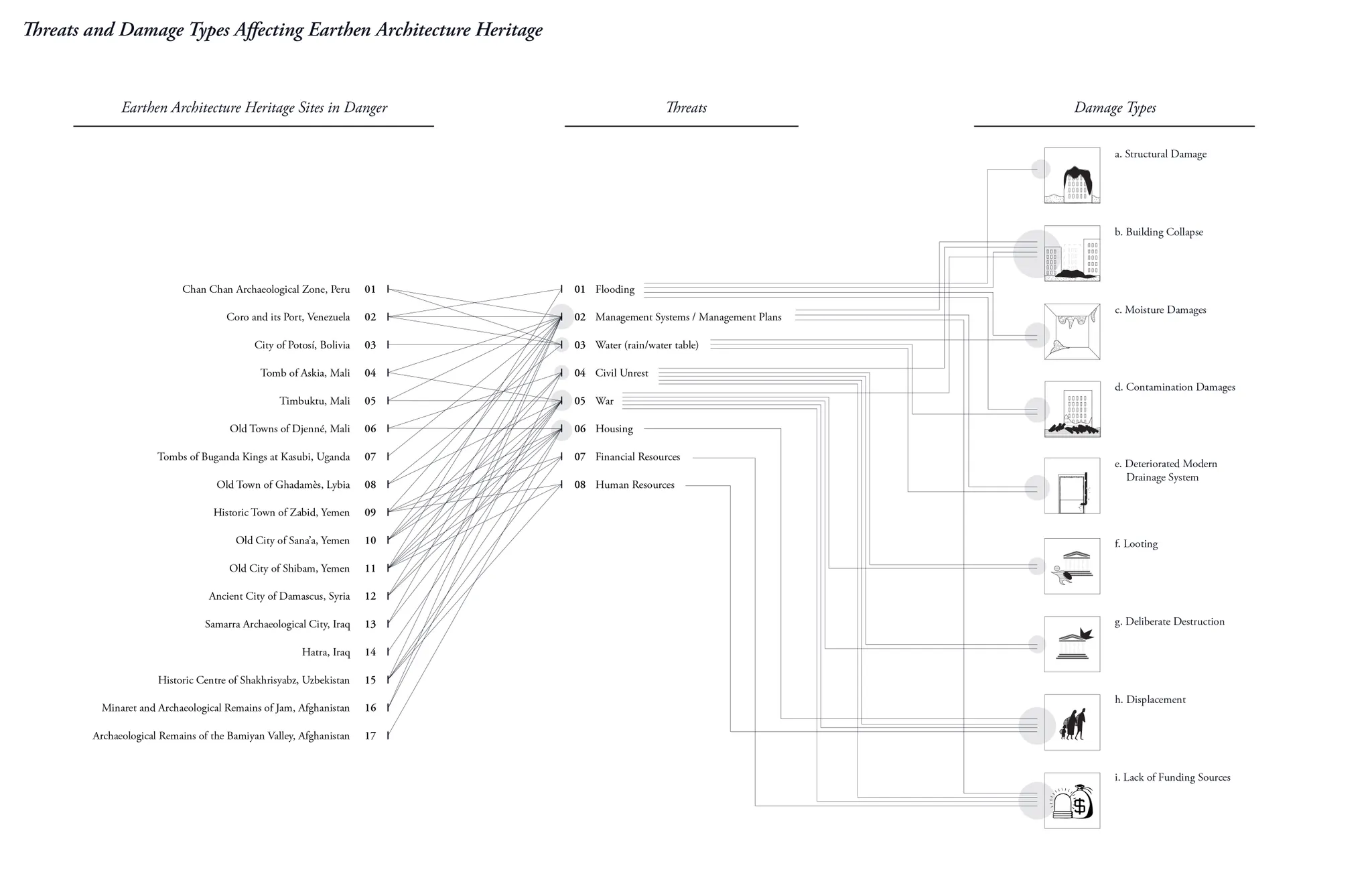MIT Architectural Design Workshop - “Climate Inheritance”
Instructor: Rania Ghosn
Spring 2022
Question for world heritage sites in danger
In the reading of Post-preservation by DeSilvey, the author suggests that “rather than deny or deflect change, we need to find meanings in transition, transience, and uncertainty.” Things from the past retain stories that we could not see, hear, touch or experience in our time, and the efforts to deliver those stories relays on generations.
Yet, can this be applied to world heritage sites in emergencies, where a transition is ongoing, and where people live with the fear of uncertainty of historical and cultural assets being eradicated?
How do we as creative agents initiate stamping both past and present to preserve our world heritage sites?
Safeguarding the Old City of Shibam
This project takes the Old City of Shibam, one of the earthen architecture heritage sites in emergencies, as a study site for its speculative future.
Shibam is a dense fabric built entirely of earthen tower houses of mostly six floors, a unique architecture that originated in South Arabian civilization. Shibam forms a walled mount in the canyon-like Hadramout Valley or Wadi Hadramawt that regularly forms an island during the seasonal floods that have enabled agriculture in the valley via complicated irrigation systems.
Based on the United Nations report (United Nations Development Program 2002), the Wadi Hadramawt region has shaped its complex geological pattern due to deep erosion from a series of thick flat-lying sedimentary units over centuries. The limestone which formed the steep walls of the Wadi also takes a part of the geological transformation of the region. But what’s affecting our heritage site is that the difficulties of reading geological pattern of the wadi leads to difficulties of assessing the drainage system of the wadi and this eventually contributes to forming a disastrous flood in a very short time which drowns the city and causes huge damage. Not only Shibam but nearby urban settlements are also negatively affected by this unique wadi geological characteristics, causing displacement, structural damage and building collapse.
The threat to the Old City of Shibam s is caused by new environmental factors, water in the ground. Piped water has been brought into the towns and cities without adequate means being provided to take it away. There are usually undersized, cracked, and leaking. The effects on the clay buildings which stand on soluble clay subsoils results in cracking and collapse.
A second serious problem has developed from the easy availability of water, which has encouraged house owners to install equipment using larger quantities of unit-showers, water closets and washing machines. Any leak in the equipment, the water pipes, or the drains out of the houses has immediate and disastrous consequences for the clay-brick tower houses' soluble wall and floor materials.
Finally, the open drains which lead the waste-waters away from the traditional houses have, in many cases, not been properly repaired with materials which matched the original. Instead, their repair has either been neglected or the work has been done using cement. The cement can be cracked within a few months, leaving the leaks as bad as they were before. The negligent repair of old buildings also had serious consequences for the roofs, allowing them to leak poorly during the rains.
What could be done is enormous, in terms of flood mitigation, through slowing down the water and harvesting every drop to sustainably accommodate all this water in the valley to benefit the people. The fundamental idea behind the construction of the whole Wadi is to slow down, spread out, and soak up the floodwater, effectively lengthening the retention time.
For the potential to completely mitigating the damaging effects of flooding, the proposed idea is an addition of new canals that allow water to flow between the muddy land. Puddles, which are shown as holes on the ground level, allow dissolved clay to flow underground so that its clay accumulation can form a new sub-layer of the soil floor. The old buildings in the process of demolition will dissolve into clay, letting it return to nature.
In its stable, mature form, this system will convert the destructive events of the significant floods to creative events that will facilitate the soil generation and disposal cycle and continuously reform a new soil layer.
Appendix
Earthen Architecture Heritage Sites
A globe view of earthen architecture heritage sites in danger
This map shows world heritage sites that incorporate earthen architecture. As of 2022, 17 properties are on the list of world heritage sites in danger, meaning serious and specific danger threatens the property, which needs immediate assistance under the monitoring of the World Heritage Convention.
UNESCO is currently running the World Heritage Program on Earthen Architecture (WHEAP) that aims to improve the conservation and management of the earthen architecture site. Earthen Architecture is one of the most powerful and original expressions of our ability to create a built environment with natural resources. It includes various structures, landscapes, urban settlements, and etc. Considering that over 10% of the World Heritage properties incorporate earthen architecture, its cultural importance throughout the world is evident and has led to its consideration as a common heritage of humankind.
However, earthen heritages are increasingly affected by disasters and conflicts around the world due to various factors, including natural hazards, climate change, and political instability, which often reinforce each other.
Threats and damage types affecting earthen architecture heritage
Various factors affect their heritage condition, for example flooding, poor management systems and plans, change in water table, civil unrest, war, housing issues, and lack of financial and human resources. These factors contribute to the deterioration of archaeological buildings and sites. Damage types include structural damage, building collapse, dilapidated drainage system, looting, displacement, and lack of funding. Based on the threats to the given sites, building collapse, displacement and lack of funding sources were the critical factors that have put earthen heritage sites in emergency.
End of Page.

